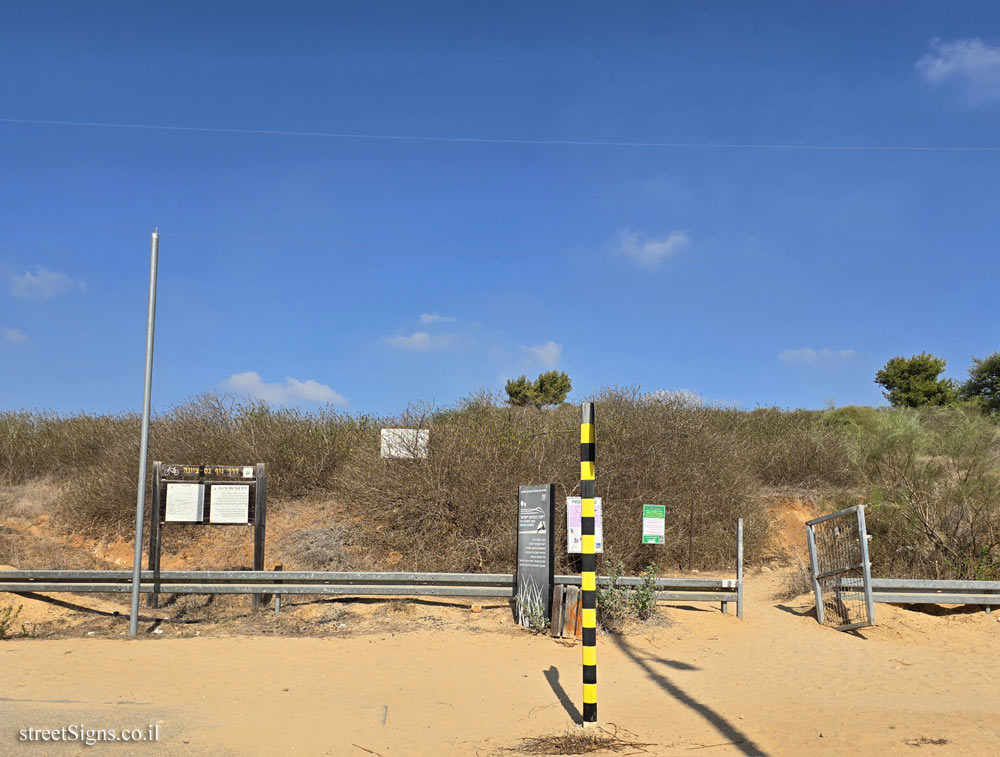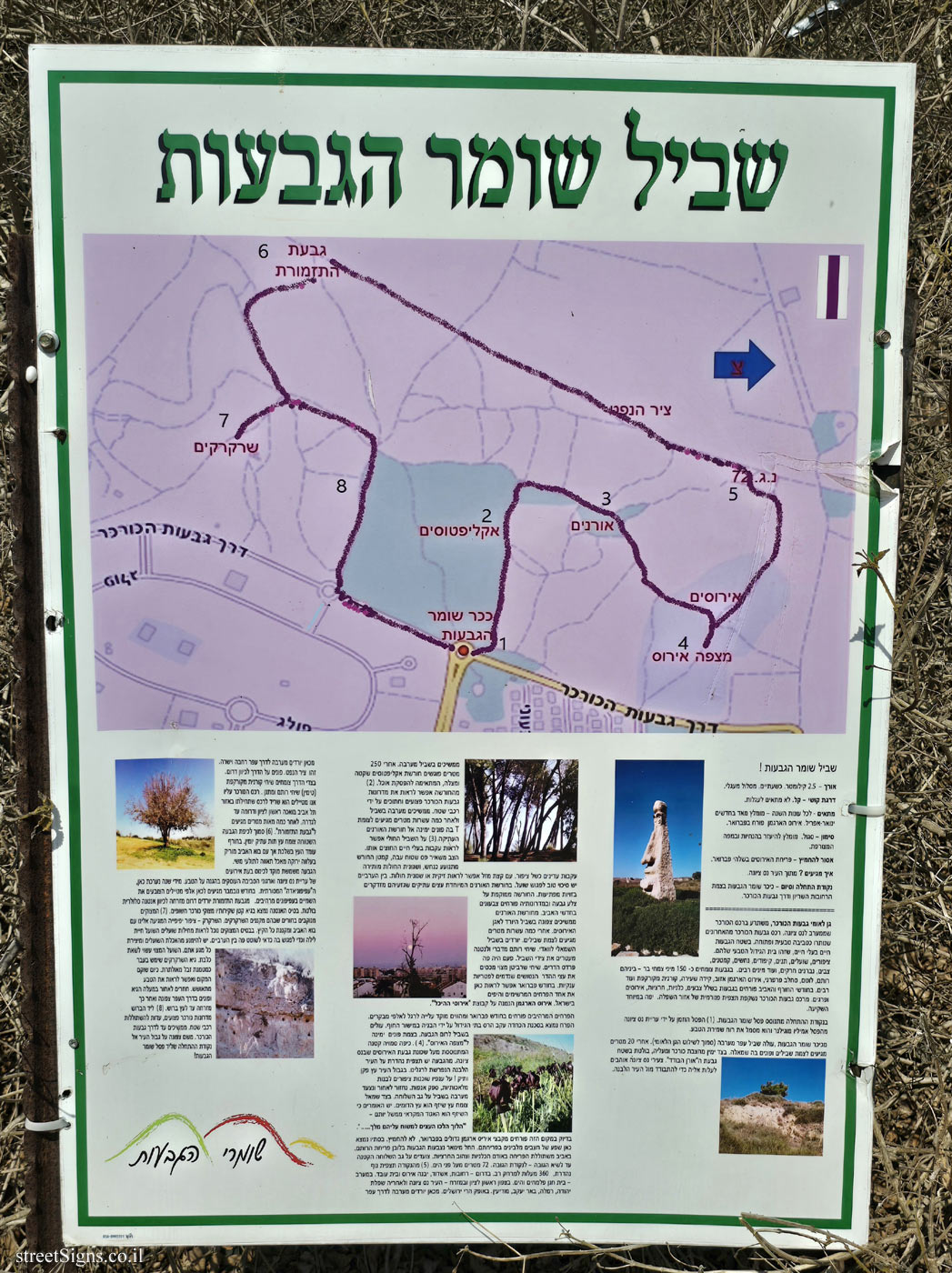The area was photographed on the same day by the same photographer
 Click for a larger image
Click for a larger image The Hill Guard Trail passes through this garden
 Click for sign's details Translation of the text on the sign
Click for sign's details Translation of the text on the sign:
[Hill Guards Symbol]
[The symbol of the Ministry of Environmental Protection]
Welcome to the National Park Gvaot HaKurkar - Nes Ziona
The Kurkar ridges on the coastal plain in Israel, a special and rare landscape formation in the world
What is a kurkar?
A fossilized sand dune. exists only on the eastern shores of the Mediterranean Sea. The grains of sand came from Ethiopia and Sudan through the Nile River with the help of the waves of the Mediterranean Sea. To these grains were added fragments of oysters and marine creatures that became fossils. Under the rain the lime melted and stuck the grains of sand into a brittle rock.
From this rock, through weathering processes, the red loam soil was created. In the winter, the rains seep through the kurkar rock into the country’s large groundwater reservoir. In the past, the kurkar was mined as a building material. The massive construction in Sharon made the rock rare and led to a ban on its mining. There are abandoned quarries in the national park. In the holes in the cliffs there is a nesting of European bee-eater.
[Image: European bee-eater]
What happens to the Kurkar Hills when the sand stops coming from East Africa? What happens to the crunchy rock when a car drives over it?
[Images: right to left]
Common hedgehog / Common fox / Common tortoise / Eurasian stone-curlew / Common falcon / Common chameleon / Blaps
In the Kurkar hills, masses of butterflies collect nectar during the flowering seasons. Flying insects, move from flower to flower, pollinate and contribute to plant reproduction. On the ground, many species live. Insects, reptiles and mammals. In order for the living species to remain in the landscape of our country and in the Kurkar Hills, an ecological continuity and "green corridor" must be maintained between the Kurkar Hills National Park, Nes Ziona, and the other open areas of the coastal plain and the lowlands. The more the green habitat decreases, the less the possibility of flora and fauna to exist and reproduce.
On the sands of the paths we will recognize the traces of Sheltopusik and fringe-fingered lizards. A land turtle can be seen among the bushes. In the early morning and in the evening we can see a fox or a hedgehog. Do not touch animals.
They respect you and allow you to walk in the Kurkar Hills National Park, respect them too!
For the list of species found in the National Park Givat HaKurkar Nes Ziona in the municipal survey 2016
Photo: Ilya Schleimb
Illustration: Igor Armiatz Steinpers, Tsuf Levy
Learn about:

 Click for a larger image
Click for a larger image  Click for sign's details
Click for sign's details